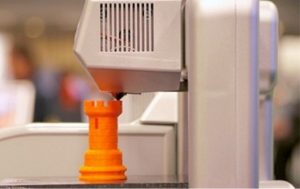Digital History
3-D Artifact Modeling, Preservation and Reproduction
By Mark Ciotola
First published on February 27, 2019
Three Dimensional artifact modeling, preservation and reproduction
Objectives
- Students will learn how 3D scanning and printing can act as a means of historical artifact preservation and reproduction.
The Technology
3D printing can either create a physical object from a digital design file or from scans and photographs of pre-existing physical objects. 3D printers print objects one “slice” or layer at a time, usually beginning at the bottom and building upwards. Most common 3D printers print in plastic which can be easily melted and channeled, but other materials can be used such as metals, resins, gypsum and even chocolate, but not on the same printer!
Special software can take scans or photos of physical objects and stitch the images together into a three-dimensional object. Often this approach produces sufficient qualities, but sometimes it can produces irregularities. For better precision, a three-dimensional scanner should be used, or place the object on a turntable to ensure more consistent positioning.
For cases where the object is hypothetical or is not physically available, an object can be designed in drawing software called Computer-Aided Design (CAD).

3D printer printing a chess piece (credit: 3D Systems)
Activities
- Students will use the SFSU Library maker space to 3D scan a sample historical object.
- Students will model a historical object using a simple, online CAD tool such as Tinker CAD.
- Students will use their university’s maker space to print a 3D historical object (either from the scan or their model).
Resources
- Tinkercad free online CAD software
« Gaming as a Form of Simulation | COURSE | Immersion In History with Virtual Reality »